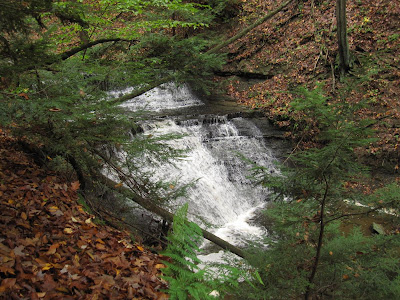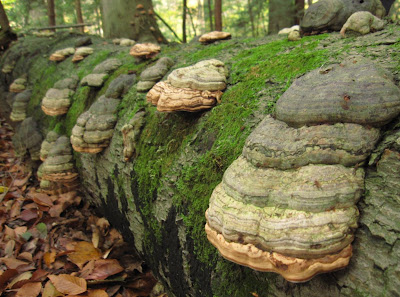I've been thinking a lot lately about beneficial soil life. It is kind of a hot topic these days, from compost tea to various commercial products, and I'd like to share a few basic concepts that inform how I think about the subject.
If there is food, they will come
I am an enthusiastic bread baker, and have been for years. Every now and then, I make my own sour dough starter. It is really ridiculously easy. Mix water and flour, leave it sitting out, and after only a few days wild yeasts and bacteria arrive, and start munching away on it. The yeasts eat some of the flour, producing carbon dioxide, which causes the bread to rise, and alcohol as a by product. The bacteria eat the alcohol from the yeast, converting it into the acids that give sour dough its tart flavor. Adding a sour dough starter speeds up the process by inoculating the dough with those organism, but you don't need it. The air is full of tons of tiny fungi and bacteria floating around, and once they land on something good to eat, they start growing and rapidly take over all the dough. The same thing is true of soil. Even if you completely sterilize your entire garden, if there is food (organic matter) microorganisms are going to arrive to eat it.
Adding more of what you've already got doesn't change anything
To bake bread, you take a little sour dough starter or commercial yeast and add it to a new pile of food (flour). Once that yeast has colonized the dough and started rising, adding more of the same yeast isn't going to do anything at all. It would be like a friend who, when our campfire started dying out, asked if we needed to add more matches to keep it going. This is why I'm skeptical of aerated compost tea. Sure, you can take your compost, and put it in special conditions to help the bacteria in it to reproduce wildly, but they're going to be the exact same bacteria that are already in your soil and compost. Pouring them by the billions over your soil isn't going to increase their numbers long term unless you give them more food – organic matter.
Not all microorganisms are created equal
Each batch of sour dough is a little different, because different yeasts and bacteria arrive and happen to get established first. Some will rise faster, others will taste better. Commercial baking yeasts has been specially selected to dry and store well, and to rise quickly. Just as plant breeders have selected bigger fruits and flowers for our gardens, bakers and brewers have selected superior yeasts for making various breads, beers, and wines. However...
All gardening is local
Travel as a gardener at all and you quickly realize that half the plants you lust after and can't grow are actually a weed somewhere else. Microorganisms are no different. Some sour dough cultures perform best in whole wheat flour, others in white. Wine makers measure the acidity and sugar content of their grapes, and choose the best yeasts for each situation. Soils are vastly more complex and variable than flours and grapes, and I'm sure that most of the organisms in my acidic, clay soil can't even survive in the alkaline, sandy soil in a friend's garden. This reality makes me very skeptical of most commercial soil biota products. Even if what is in that package is an exceptional combination of organisms, what are the chances that they are going to be able to out complete the thousands of locally adapted species already living in my soil? This is also why I'm not surprised that in scientific research on these types of treatments they've only seen beneficial results when adding organisms to sterile potting media. That is a much more uniform, simple setting than the wild diversity of soil, and starting with something sterile, the added organisms don't have to complete against an already established soil community.
But maybe...
This is the completely speculative part of this post. As a plant breeder, I know that you can create significantly better varieties for you garden if you simply grow a diverse variety of plants, pick the ones that perform the best for you, and save seeds from those to grow again next year. Would it be possible to somehow select for superior populations of soil life as well? The idea intrigues me, but I don't quite know how to do it. Carol Deppe, in her brilliant book
Breed Your Own Vegetable Varieties, says that she is attempting to do this by each year taking soil from around the best performing, disease-free individual plants in her garden and spreading it around the garden to hopefully promote the spread of better soil biota. Does this work? I don't know. Sometimes when I have a spare moment, I dream up wildly complex, completely impractical schemes to “breed” soil biota involving acres and acres of land, soil samples from around the world, and annual soil sterilization for all but my selected plots of soil, but I don't know if I'll ever attempt it. Is anyone else a soil nerd thinking this way? Any ideas, comments?



























